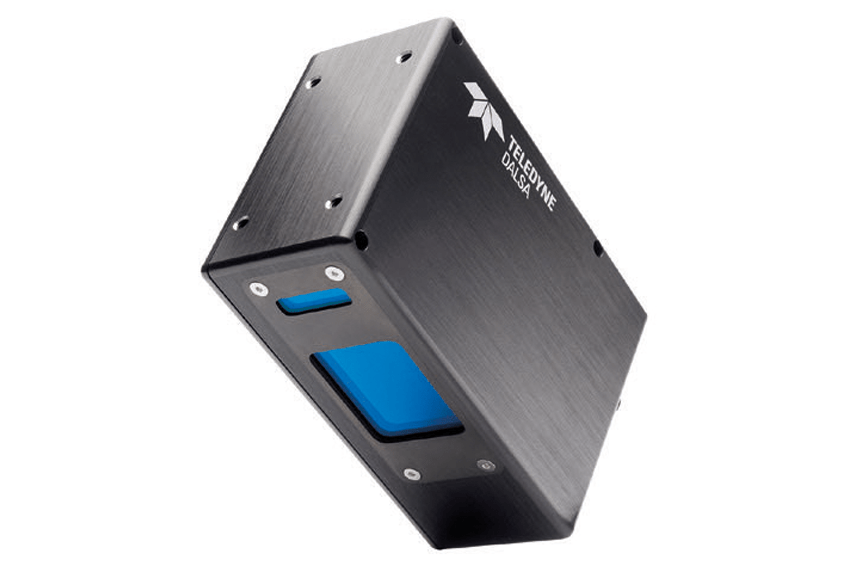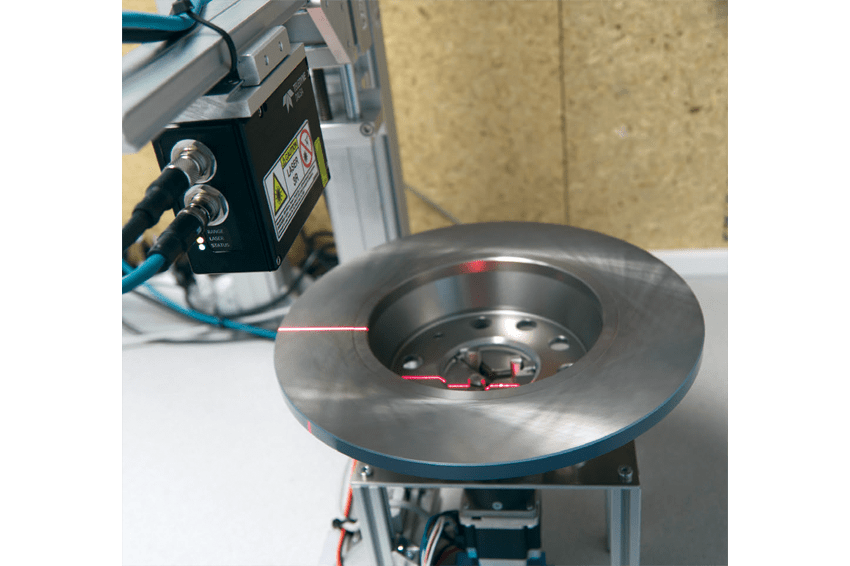Where Imaging and Quality Inspection Intersect
18.04.2023
- Industrial 2D and 3D Imaging Solutions Prove their Reliability in Testing, Error Detection, and Inspection.
Difficult production conditions require not only sophisticated products for a wide range of applications, but also reliable support and the manufacturer’s assistance in solving customer requirements. Successful partnerships prove what the industry is capable of.
Testing of electronic components
In recent years, Phil-Vision, based in Puchheim, Germany, has gained a great deal of experience in a wide range of industries, including the electronics industry. Part of the production of electronic components are so-called hot processes in which, for example, hot chemical vapors are deposited on the blank wafers. The quality of the process must be subsequently checked and rechecked. Due to the difficult production conditions, only industrial cameras that deliver accurate results even in an increased temperature range are suitable for this. Over the years, Phil-Vision has successfully integrated Teledyne Dalsa’s machine vision components for a wide variety of applications.
“In our rugged environment, the Genie camera series have proven to be a good choice,” reveals Phil-Vision’s Chief Vision Design Officer Patrick Gailer. “These cameras deliver high-quality images even at elevated operating temperatures and have a very low failure rate. In the rare cases where failures did occur because of the extreme conditions, Teledyne Dalsa provided a quick and efficient response, and replacement cameras.” As a further advantage, besides the mechanical robustness, Gailer cites the numerous variants of the Genie camera series which offer a suitable model for almost every conceivable 2D machine vision system application in terms of resolutions and interfaces. “In addition, we very much like to use the camera series for setting up multi-stereo systems, as these cameras can be synchronized easily and precisely via the Precision Time Protocol (PTP),” Gailer continues. “Based on this standard, the use of a trigger cable can be omitted, and synchronization takes place exclusively via the network. Genie cameras offer the simplest and most precise control we have found on the market for this purpose.”
Line by Line Error Detection
In applications where products move on a gantry or for web inspections, line scan cameras have proven to be a more suitable technology than area scan cameras. The images are captured line by line and are then combined to form a theoretically infinitely long image. Products that benefit from line scan inspection include, among other things, steel coils, currency, paper rolls or textiles.
We also regularly rely on the line scan camera models from Teledyne Dalsa, emphasizes Gailer: “Our partner‘s line scan camera portfolio is unique to the machine vision industry – with several series that combine many resolutions, speeds, and interfaces. In the Linea, Piranha, Eliixa and Uniiqa product lines, models with dual-line and TDI technology as well as SWIR and multispectral line scan cameras are available in addition to conventional line scan cameras. No matter the application or industry, we have always found the perfect line scan camera to meet the demands of our customers.”
Inspection in 3 Dimensions
3D imaging technology has evolved a great deal in recent years offering much simpler solutions to many applications that cannot be realized with 2D systems or were only possible with considerable effort. The fact that 3D vision systems now enable much more viable options is due in part to parallel advances in sensor quality and speed, embedded image processing systems, FPGAs, lasers, optics, and smart systems. This technology is now cost-effective, reliable, repeatable, easy to implement, and has proven itself in a wide range of demanding applications.
As an example, Gailer cites the optical inspection of brake discs in the automotive industry which enables better matching of defects than 2D image processing systems: “Since brake discs are manufactured in grey cast iron, they can have holes that are then exposed during grinding. These holes on the surfaces must be dimensioned and the depth of the balance milling must be measured.” In addition to the pure safety aspect of automotive brakes, Gailer says component finish is also becoming increasingly important, as they are visible in certain cars and thus part of the visual appearance. Brake discs with visible defects are not acceptable to buyers of these high-priced vehicles, even if the braking function is not impaired because of these defects.
Inspecting brake discs is not easy due to the lighting situation: their surfaces are polished and have grinding grooves that are unavoidable during production and produce certain artifacts. To make matters worse, fingerprints or fine-grained sand as a residue of the preceding grinding and washing processes are easily misidentified as unacceptable defects by 2D image processing systems.
“For this system, we used a Z-Trak2 series 3D profile sensor which is laser triangulation-based and offers a high scanning speed of up to 45,000 profiles/s which makes it one of the fastest 3D scanners on the market. With a resolution of 2,048 pixels per profile, as well as its rugged, compact design, Z-Trak2 is perfectly suited for this application. These IP67-rated 3D vision systems are pre-calibrated, so they can be integrated into inspection systems with little effort.” By using a Z-Trak2, Phil-Vision was able to solve the application more effectively and at a lower cost to the customer.
Applications with Several Cameras
With the Vicore multi-camera vision system, the manufacturer offers a powerful system that allows the combination of a wide range of 2D and 3D cameras. “With a Vicore system, we were able to implement a system at a major European food manufacturer to check the presence of cookies, their correct dimensions, the correct degree of browning, and their number and distribution on baking lines,” Gailer recounts. “A perfect baking result can only be achieved under optimal conditions, which is why it was so important to adapt the vision system exactly to the specifications when implementing this application.” In this application too, the robustness of the machine vision system represents an important criterion for ensuring trouble-free 24/7 operation.
Author
Peter Stiefenhöfer
PS Marcom Services








